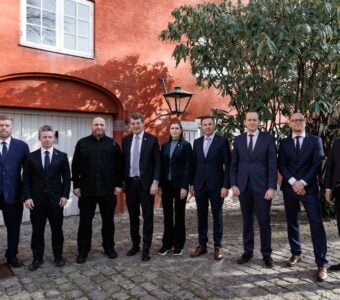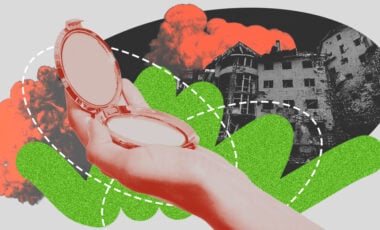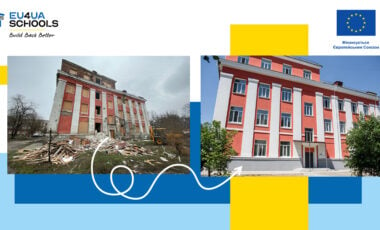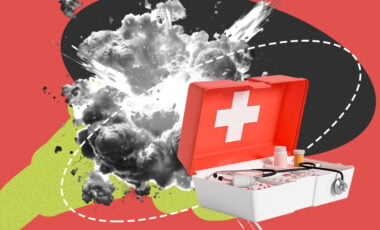US to provide Ukraine with radiation sensors to detect nuclear explosions – NYT

The US is in the process of deploying sensors in Ukraine that are capable of detecting radiation from nuclear weapons or "dirty" bombs and subsequently identifying the source of the attack.
The New York Times reports that.
According to the publication, the US Federal National Nuclear Security Administration is creating a modern network that can identify the identity of the attacker. In part, this is done so that if Russia detonates a radioactive weapon on Ukrainian soil, it would be possible to determine its atomic footprint and prove Moscow's guilt.
The Nuclear Emergency Support Team — a shadow unit of atomic experts under the leadership of the Security Agency — is working with Ukraine to deploy radiation sensors, train personnel, monitor data and warn of deadly radiation, the paper notes.
In a statement sent to The New York Times in response to a reporter's question, the agency said the network of atomic sensors was being deployed "throughout the region" and would have the ability "to characterize the size, location and effects of any nuclear explosion." Additionally, it said the deployed sensors would deny Russia "any opportunity to use nuclear weapons in Ukraine without attribution."
According to the newspaper, Washington can use the information collected by the network to eliminate the possibility of false identification of the culprit of the nuclear explosion.
"This may seem like an unnecessary step, given the peculiarity of the mushroom cloud. But if the weapon was delivered by truck, tank or boat, and not by a visible missile with a tracked flight path, it may be almost impossible to find out its origin," the article says.
According to nuclear weapons experts, public information about such defense planning can deter Moscow. This makes the Kremlin understand that Washington can expose its "operation under a foreign flag."
"For example, Moscow could falsely claim that Kyiv had set off a nuclear explosion on the battlefield to try to draw the West into deeper military aid. But in theory, with a network of sensors in place, Washington could point to its own analysis of the nuclear explosion's origin to show that the attacker was Moscow," the publication notes.
Last fall, Russia, without providing any evidence, repeatedly stated that Ukraine was planning to detonate a so-called "dirty bomb" intended to distribute radioactive materials, the publication reminds. At the time, Washington warned that the Kremlin was trying to create a false pretext for escalating the war.
For reference:
On September 21, 2022, during his address, the President of the Russian Federation, Vladimir Putin, said that the Western countries had staged "nuclear blackmail" against Russia; therefore, in the event of a threat to its territorial integrity, it is ready to "use all available means." This is not the first threat of nuclear weapons. On the fourth day of the Russian Federation's full-scale invasion of Ukraine in February 2022, Putin, whose troops had already suffered heavy losses in Ukraine, ordered the Russian army's deterrence forces to go into special combat mode. Due to the fact that allegedly "officials of NATO countries make aggressive statements" against Russia. One aspect of strategic deterrence is the use of nuclear weapons. Even earlier, on February 21, the head of the aggressor country emphasized that Ukraine is quite capable of restoring nuclear weapons, which it gave up in 1994, soon. Therefore, "we (Russia) cannot not react to it."
US President Joseph Biden also mentioned Putin's nuclear threats during his speech at the UN General Assembly, saying that "nuclear threats against Europe and reckless disregard for the obligations of the nuclear non-proliferation regime are an extremely significant violation of the UN Charter." NATO should let the Russian Federation understand that the use of nuclear weapons will cause a counter-response, said the Minister of Foreign Affairs of Lithuania, Gabrielius Landsbergis.
The idea of nuclear deterrence was fundamental to the security landscape of the world during the Cold War. This is about the fact that one nuclear state will not dare to attack another because of the threat of a nuclear strike. In general, this principle is still relevant today: the fear of the devastating consequences of nuclear war still deters the possibility of full-scale conflicts – but does not completely prevent them.
According to the Stockholm Institute for Peace Research (SIPRI), in 2021 the Russian Federation had a total of 6,255 warheads, while the US had 5,500. The Russian military doctrine says that the use of tactical nuclear weapons is accepted if the existence of the Russian Federation is under threat.

















































